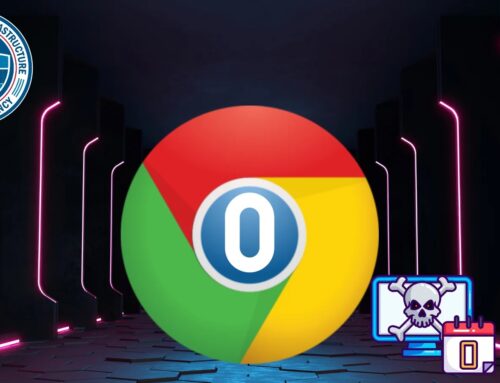
OpenAI Releases GPT-5.1-Codex-Max that Performs Coding Tasks Independently
The landscape of software development is undergoing a profound transformation. Imagine a future where complex coding tasks are no longer the exclusive domain of human developers, but are instead handled with remarkable autonomy by intelligent machines. This future is rapidly approaching with OpenAI’s latest groundbreaking release: GPT-5.1-Codex-Max.
This specialized AI model isn’t just another incremental update; it represents a significant leap in agentic AI capabilities, promising to redefine how code is written, debugged, and deployed. For IT professionals, security analysts, and developers alike, understanding this paradigm shift is crucial for navigating the evolving tech ecosystem.
GPT-5.1-Codex-Max: A New Era of Autonomous Coding
OpenAI’s introduction of GPT-5.1-Codex-Max marks a pivotal moment for the software engineering world. Unlike general-purpose AI models that offer broad language understanding, Codex-Max is meticulously engineered and optimized for the intricate demands of coding. Its core distinction lies in its ability to perform complex development tasks with minimal human intervention, signaling a new era of genuine AI autonomy in software creation.
The model’s design incorporates innovative compaction technology, allowing it to efficiently process and generate high-quality code. This specialized architecture enables Codex-Max to move beyond simple code generation; it can address multifaceted programming challenges, understand context within large codebases, and even contribute to the architectural design of software projects. This capability suggests a future where AI acts not just as a tool, but as a collaborative developer.
The Mechanics of Agentic AI in Software Development
At its heart, agentic AI refers to systems capable of setting goals, planning actions, and executing those plans autonomously to achieve desired outcomes. GPT-5.1-Codex-Max embodies this principle in the realm of software development. It can interpret high-level requirements, break them down into actionable coding tasks, and independently write, test, and refactor code segments.
This goes beyond what previous iterations of AI-powered coding assistants offered. Earlier models might suggest code snippets or complete functions based on prompts. Codex-Max, however, aims to manage entire development cycles or significant portions thereof. This includes understanding API specifications, integrating different modules, and ensuring code quality and adherence to best practices—a truly comprehensive approach to automated software engineering.
Implications for Developers and Cybersecurity
The advent of GPT-5.1-Codex-Max carries profound implications for various stakeholders. For developers, it suggests a shift in roles. Routine or boilerplate coding tasks may be increasingly offloaded to AI, allowing human developers to focus on higher-level design, innovation, and complex problem-solving. This could accelerate development cycles and reduce time-to-market for new applications.
From a cybersecurity perspective, the introduction of autonomous coding models presents both opportunities and challenges. On one hand, an AI capable of writing robust code might lead to fewer human-induced vulnerabilities, such as those caused by coding errors or oversight. Theoretically, a well-trained AI could enforce secure coding practices and identify potential security flaws during the development process. For instance, common vulnerabilities like SQL injection (often mislabeled, but conceptually similar to CVE-2023-49034 in certain contexts) or cross-site scripting could be mitigated by AI-generated code that inherently follows secure patterns.
Conversely, the potential for AI-generated vulnerabilities cannot be ignored. If an AI model is trained on flawed data or inadvertently learns insecure coding patterns, it could propagate these vulnerabilities across vast amounts of code. Ensuring the security and integrity of the AI’s output will be paramount. Further, malicious actors could potentially leverage such powerful AI for creating highly sophisticated malware or for automating exploit generation, necessitating advanced detection and prevention mechanisms.
The Future of Software Engineering with AI
GPT-5.1-Codex-Max serves as a powerful indicator of the trajectory of software engineering. The trend towards increasing automation, fueled by advanced AI, will undoubtedly reshape development teams and workflows. Collaboration between human and AI developers will become more common, with AI handling the mechanical aspects of coding and humans overseeing design, strategy, and complex problem-solving.
This evolution also demands a renewed focus on AI ethics, accountability, and validation. Rigorous testing, auditing, and continuous monitoring of AI-generated code will be essential to ensure its quality, security, and alignment with human intent. Organizations must prepare for a future where their codebase might be largely AI-driven, necessitating new strategies for code review, quality assurance, and security oversight.
Key Takeaways
- OpenAI’s GPT-5.1-Codex-Max is a specialized AI model for autonomous coding, marking a significant advance in agentic AI.
- It can handle complex development tasks, reducing the need for human intervention in many coding processes.
- The model employs compaction technology, distinguishing it from general-purpose AI and enhancing its efficiency in software engineering.
- Implications include accelerated development, a shift in developer roles, and new cybersecurity considerations concerning AI-generated code.
- The rise of autonomous coding necessitates robust security practices for AI outputs and a proactive approach to AI-powered threats.





